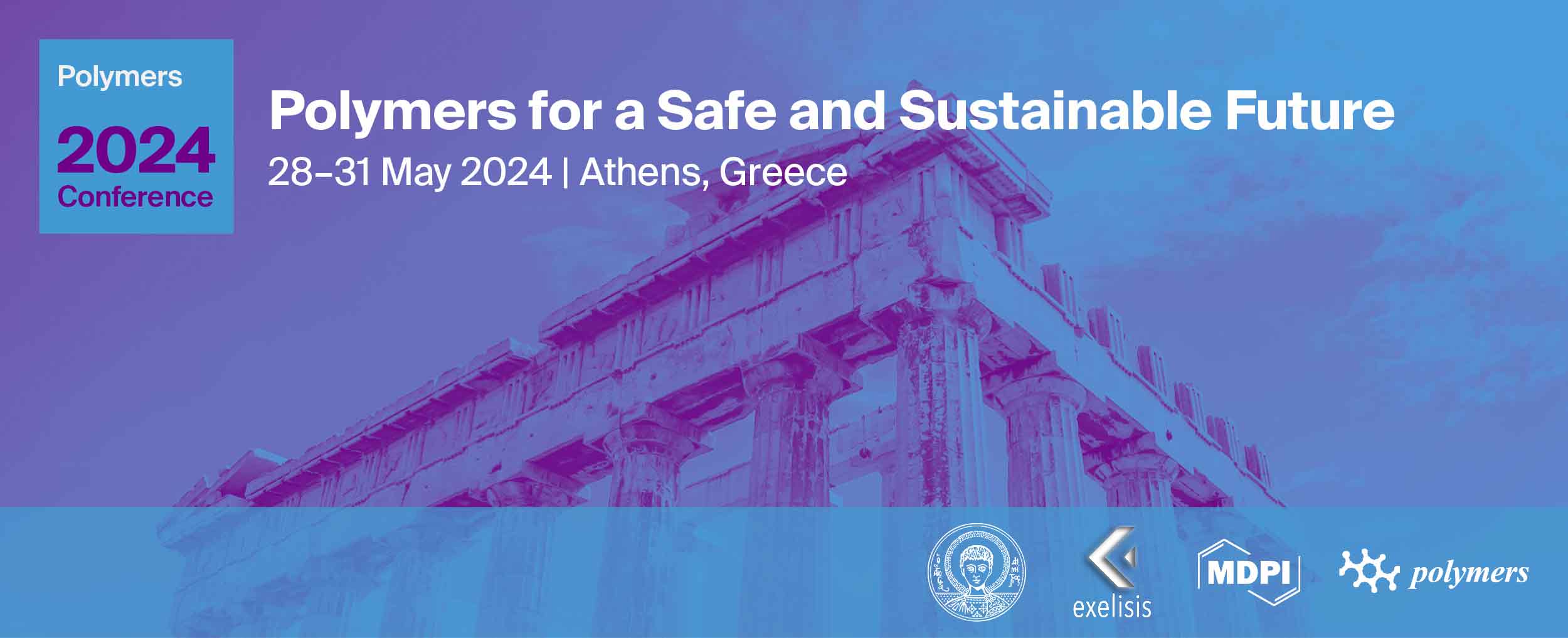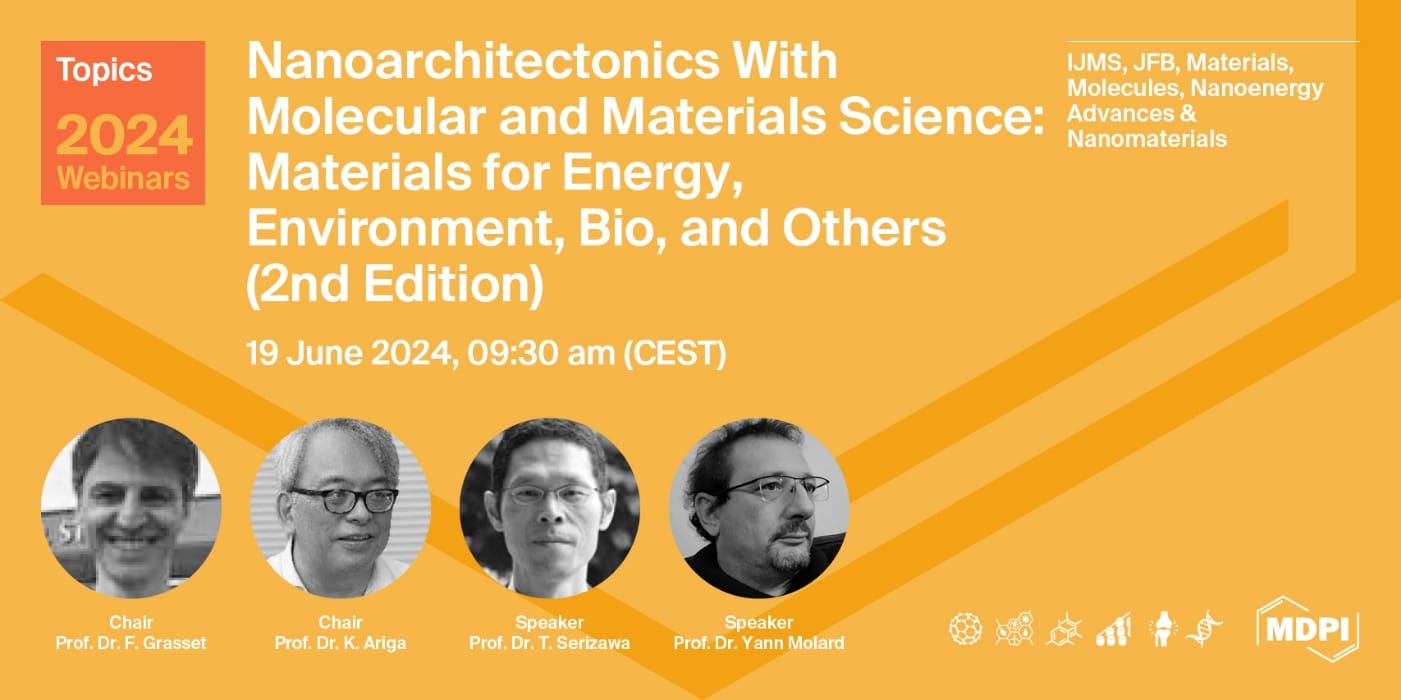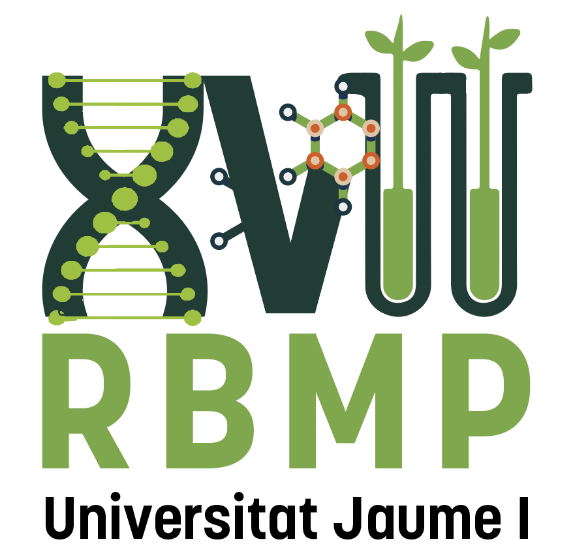-
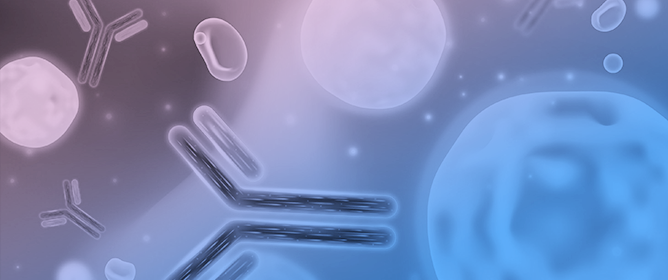 The Therapeutic Mechanisms of Mesenchymal Stem Cells in MS—A Review Focusing on Neuroprotective Properties
The Therapeutic Mechanisms of Mesenchymal Stem Cells in MS—A Review Focusing on Neuroprotective Properties -
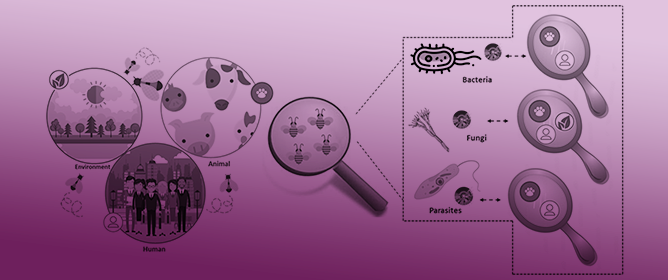 The Bee Gut Microbiota: Bridging Infective Agents Potential in the One Health Context
The Bee Gut Microbiota: Bridging Infective Agents Potential in the One Health Context -
 The Role of Extracellular Vesicles in Atopic Dermatitis
The Role of Extracellular Vesicles in Atopic Dermatitis -
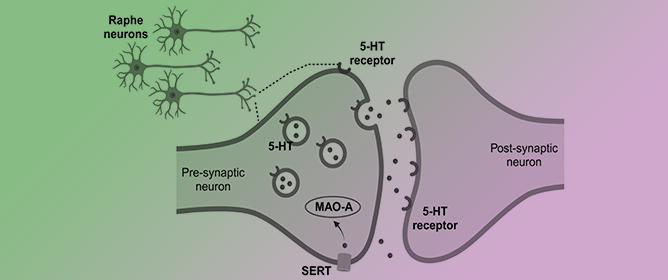 Revisiting the Role of Serotonin in Sleep-Disordered Breathing
Revisiting the Role of Serotonin in Sleep-Disordered Breathing -
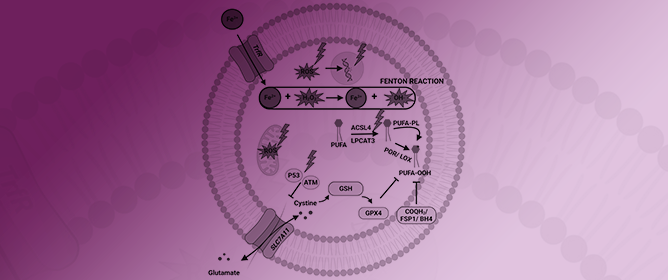 Ferroptosis: Frenemy of Radiotherapy
Ferroptosis: Frenemy of Radiotherapy
Journal Description
International Journal of Molecular Sciences
International Journal of Molecular Sciences
is an international, peer-reviewed, open access journal providing an advanced forum for biochemistry, molecular and cell biology, molecular biophysics, molecular medicine, and all aspects of molecular research in chemistry, and is published semimonthly online by MDPI. The Australian Society of Plant Scientists (ASPS), Epigenetics Society, European Calcium Society (ECS), European Chitin Society (EUCHIS), Spanish Society for Cell Biology (SEBC) and others are affiliated with IJMS and their members receive a discount on the article processing charges.
- Open Access— free for readers, with article processing charges (APC) paid by authors or their institutions.
- High Visibility: indexed within Scopus, SCIE (Web of Science), PubMed, PMC, MEDLINE, Embase, CAPlus / SciFinder, and other databases.
- Journal Rank: JCR - Q1 (Biochemistry & Molecular Biology) / CiteScore - Q1 (Inorganic Chemistry)
- Rapid Publication: manuscripts are peer-reviewed and a first decision is provided to authors approximately 16.3 days after submission; acceptance to publication is undertaken in 2.6 days (median values for papers published in this journal in the second half of 2023).
- Recognition of Reviewers: reviewers who provide timely, thorough peer-review reports receive vouchers entitling them to a discount on the APC of their next publication in any MDPI journal, in appreciation of the work done.
- Testimonials: See what our editors and authors say about the IJMS.
- Companion journals for IJMS include: Biophysica, Obesities, Stresses and Lymphatics.
Impact Factor:
5.6 (2022);
5-Year Impact Factor:
6.2 (2022)
Latest Articles
Estrogen-Related Receptor α: A Key Transcription Factor in the Regulation of Energy Metabolism at an Organismic Level and a Target of the ABA/LANCL Hormone Receptor System
Int. J. Mol. Sci. 2024, 25(9), 4796; https://doi.org/10.3390/ijms25094796 (registering DOI) - 27 Apr 2024
Abstract
The orphan nuclear receptor ERRα is the most extensively researched member of the estrogen-related receptor family and holds a pivotal role in various functions associated with energy metabolism, especially in tissues characterized by high energy requirements, such as the heart, skeletal muscle, adipose
[...] Read more.
The orphan nuclear receptor ERRα is the most extensively researched member of the estrogen-related receptor family and holds a pivotal role in various functions associated with energy metabolism, especially in tissues characterized by high energy requirements, such as the heart, skeletal muscle, adipose tissue, kidney, and brain. Abscisic acid (ABA), traditionally acknowledged as a plant stress hormone, is detected and actively functions in organisms beyond the land plant kingdom, encompassing cyanobacteria, fungi, algae, protozoan parasites, lower Metazoa, and mammals. Its ancient, cross-kingdom role enables ABA and its signaling pathway to regulate cell responses to environmental stimuli in various organisms, such as marine sponges, higher plants, and humans. Recent advancements in understanding the physiological function of ABA and its mammalian receptors in governing energy metabolism and mitochondrial function in myocytes, adipocytes, and neuronal cells suggest potential therapeutic applications for ABA in pre-diabetes, diabetes, and cardio-/neuroprotection. The ABA/LANCL1-2 hormone/receptor system emerges as a novel regulator of ERRα expression levels and transcriptional activity, mediated through the AMPK/SIRT1/PGC-1α axis. There exists a reciprocal feed-forward transcriptional relationship between the LANCL proteins and transcriptional coactivators ERRα/PGC-1α, which may be leveraged using natural or synthetic LANCL agonists to enhance mitochondrial function across various clinical contexts.
Full article
(This article belongs to the Special Issue Hormone/Receptor System in Human Diseases)
►
Show Figures
Open AccessArticle
EGCG Disrupts the LIN28B/Let-7 Interaction and Reduces Neuroblastoma Aggressiveness
by
Simona Cocchi, Valentina Greco, Viktoryia Sidarovich, Jacopo Vigna, Francesca Broso, Diana Corallo, Jacopo Zasso, Angela Re, Emanuele Filiberto Rosatti, Sara Longhi, Andrea Defant, Federico Ladu, Vanna Sanna, Valentina Adami, Vito G. D'Agostino, Mattia Sturlese, Mario Sechi, Sanja Aveic, Ines Mancini, Denise Sighel and Alessandro Quattroneadd
Show full author list
remove
Hide full author list
Int. J. Mol. Sci. 2024, 25(9), 4795; https://doi.org/10.3390/ijms25094795 (registering DOI) - 27 Apr 2024
Abstract
Neuroblastoma (NB) is the most commonly diagnosed extracranial solid tumor in children, accounting for 15% of all childhood cancer deaths. Although the 5-year survival rate of patients with a high-risk disease has increased in recent decades, NB remains a challenge in pediatric oncology,
[...] Read more.
Neuroblastoma (NB) is the most commonly diagnosed extracranial solid tumor in children, accounting for 15% of all childhood cancer deaths. Although the 5-year survival rate of patients with a high-risk disease has increased in recent decades, NB remains a challenge in pediatric oncology, and the identification of novel potential therapeutic targets and agents is an urgent clinical need. The RNA-binding protein LIN28B has been identified as an oncogene in NB and is associated with a poor prognosis. Given that LIN28B acts by negatively regulating the biogenesis of the tumor suppressor let-7 miRNAs, we reasoned that selective interference with the LIN28B/let-7 miRNA interaction would increase let-7 miRNA levels, ultimately leading to reduced NB aggressiveness. Here, we selected (−)-epigallocatechin 3-gallate (EGCG) out of 4959 molecules screened as the molecule with the best inhibitory activity on LIN28B/let-7 miRNA interaction and showed that treatment with PLC/PLGA-PEG nanoparticles containing EGCG (EGCG-NPs) led to an increase in mature let-7 miRNAs and a consequent inhibition of NB cell growth. In addition, EGCG-NP pretreatment reduced the tumorigenic potential of NB cells in vivo. These experiments suggest that the LIN28B/let-7 miRNA axis is a good therapeutic target in NB and that EGCG, which can interfere with this interaction, deserves further preclinical evaluation.
Full article
(This article belongs to the Special Issue Exploring Novel Molecular, Metabolic and Cellular Mechanisms for Developing New Therapeutic Targets against Childhood Cancers)
Open AccessArticle
Light Supplementation in Pitaya Orchards Induces Pitaya Flowering in Winter by Promoting Phytohormone Biosynthesis
by
Meng Wang, Jiaxue Li, Tao Li, Shaoling Kang, Senrong Jiang, Jiaquan Huang and Hua Tang
Int. J. Mol. Sci. 2024, 25(9), 4794; https://doi.org/10.3390/ijms25094794 (registering DOI) - 27 Apr 2024
Abstract
The interaction between light and phytohormones is crucial for plant growth and development. The practice of supplementing light at night during winter to promote pitaya flowering and thereby enhance yield has been shown to be crucial and widely used. However, it remains unclear
[...] Read more.
The interaction between light and phytohormones is crucial for plant growth and development. The practice of supplementing light at night during winter to promote pitaya flowering and thereby enhance yield has been shown to be crucial and widely used. However, it remains unclear how supplemental winter light regulates phytohormone levels to promote flowering in pitaya. In this study, through analyzing the transcriptome data of pitaya at four different stages (NL, L0, L1, L2), we observed that differentially expressed genes (DEGs) were mainly enriched in the phytohormone biosynthesis pathway. We further analyzed the data and found that cytokinin (CK) content first increased at the L0 stage and then decreased at the L1 and L2 stages after supplemental light treatment compared to the control (NL). Gibberellin (GA), auxin (IAA), salicylic acid (SA), and jasmonic acid (JA) content increased during the formation of flower buds (L1, L2 stages). In addition, the levels of GA, ethylene (ETH), IAA, and abscisic acid (ABA) increased in flower buds after one week of development (L2f). Our results suggest that winter nighttime supplemental light can interact with endogenous hormone signaling in pitaya, particularly CK, to regulate flower bud formation. These results contribute to a better understanding of the mechanism of phytohormone interactions during the induction of flowering in pitaya under supplemental light in winter.
Full article
(This article belongs to the Section Molecular Plant Sciences)
Open AccessArticle
Fetal Kidney Grafts and Organoids from Microminiature Pigs: Establishing a Protocol for Production and Long-Term Cryopreservation
by
Yuka Inage, Koki Fujimori, Masaki Takasu, Kenji Matsui, Yoshitaka Kinoshita, Keita Morimoto, Nagisa Koda, Shutaro Yamamoto, Kentaro Shimada, Takashi Yokoo and Eiji Kobayashi
Int. J. Mol. Sci. 2024, 25(9), 4793; https://doi.org/10.3390/ijms25094793 (registering DOI) - 27 Apr 2024
Abstract
Fetal organs and organoids are important tools for studying organ development. Recently, porcine organs have garnered attention as potential organs for xenotransplantation because of their high degree of similarity to human organs. However, to meet the prompt demand for porcine fetal organs by
[...] Read more.
Fetal organs and organoids are important tools for studying organ development. Recently, porcine organs have garnered attention as potential organs for xenotransplantation because of their high degree of similarity to human organs. However, to meet the prompt demand for porcine fetal organs by patients and researchers, effective methods for producing, retrieving, and cryopreserving pig fetuses are indispensable. Therefore, in this study, to collect fetuses for kidney extraction, we employed cesarean sections to preserve the survival and fertility of the mother pig and a method for storing fetal kidneys by long-term cryopreservation. Subsequently, we evaluated the utility of these two methods. We confirmed that the kidneys of pig fetuses retrieved by cesarean section that were cryopreserved for an extended period could resume renal growth when grafted into mice and were capable of forming renal organoids. These results demonstrate the usefulness of long-term cryopreserved fetal pig organs and strongly suggest the effectiveness of our comprehensive system of pig fetus retrieval and fetal organ preservation, thereby highlighting its potential as an accelerator of xenotransplantation research and clinical innovation.
Full article
(This article belongs to the Special Issue Recent Research in Stem Cells to Organoids)
►▼
Show Figures
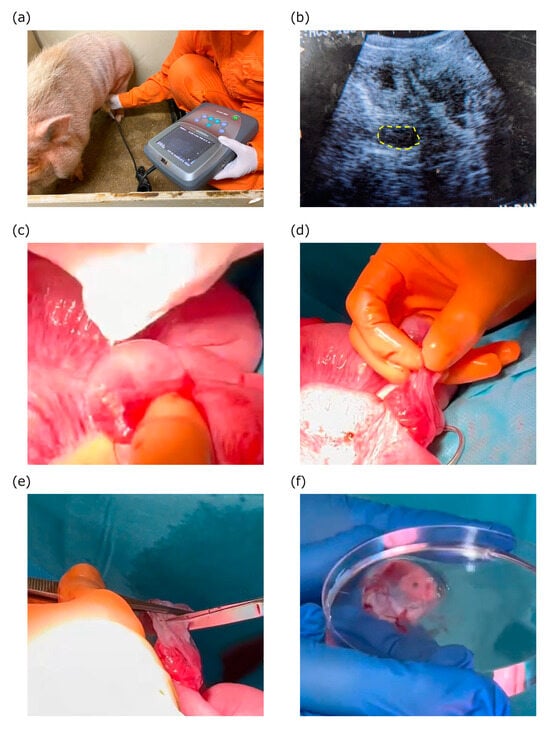
Figure 1
Open AccessArticle
Development, High-Throughput Profiling, and Biopanning of a Large Phage Display Single-Domain Antibody Library
by
Hee Eon Lee, Ah Hyun Cho, Jae Hyeon Hwang, Ji Woong Kim, Ha Rim Yang, Taehoon Ryu, Yushin Jung and Sukmook Lee
Int. J. Mol. Sci. 2024, 25(9), 4791; https://doi.org/10.3390/ijms25094791 (registering DOI) - 27 Apr 2024
Abstract
Immunoglobulin G-based monoclonal antibodies (mAbs) have been effective in treating various diseases, but their large molecular size can limit their penetration of tissue and efficacy in multifactorial diseases, necessitating the exploration of alternative forms. In this study, we constructed a phage display library
[...] Read more.
Immunoglobulin G-based monoclonal antibodies (mAbs) have been effective in treating various diseases, but their large molecular size can limit their penetration of tissue and efficacy in multifactorial diseases, necessitating the exploration of alternative forms. In this study, we constructed a phage display library comprising single-domain antibodies (sdAbs; or “VHHs”), known for their small size and remarkable stability, using a total of 1.6 × 109 lymphocytes collected from 20 different alpacas, resulting in approximately 7.16 × 1010 colonies. To assess the quality of the constructed library, next-generation sequencing-based high-throughput profiling was performed, analyzing approximately 5.65 × 106 full-length VHH sequences, revealing 92% uniqueness and confirming the library’s diverse composition. Systematic characterization of the library revealed multiple sdAbs with high affinity for three therapeutically relevant antigens. In conclusion, our alpaca sdAb phage display library provides a versatile resource for diagnostics and therapeutics. Furthermore, the library’s vast natural VHH antibody repertoire offers insights for generating humanized synthetic sdAb libraries, further advancing sdAb-based therapeutics.
Full article
(This article belongs to the Special Issue Application of High-Throughput Omics Sequencing in Personalized Medicine)
►▼
Show Figures
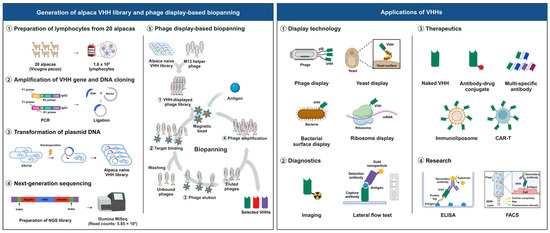
Figure 1
Open AccessArticle
Design of Mixed Medicinal Plants, Rich in Polyphenols, Vitamin B2, and Palmitoylethanolamide-Based Supplement to Help Reduce Nerve Pain: A Preclinical Study
by
Simone Mulè, Giorgia Rosso, Mattia Botta, Arianna Brovero, Sara Ferrari, Rebecca Galla, Claudio Molinari and Francesca Uberti
Int. J. Mol. Sci. 2024, 25(9), 4790; https://doi.org/10.3390/ijms25094790 (registering DOI) - 27 Apr 2024
Abstract
Neuropathy affects 7–10% of the general population and is caused by a lesion or disease of the somatosensory system. The limitations of current therapies highlight the necessity of a new innovative approach to treating neuropathic pain (NP) based on the close correlation between
[...] Read more.
Neuropathy affects 7–10% of the general population and is caused by a lesion or disease of the somatosensory system. The limitations of current therapies highlight the necessity of a new innovative approach to treating neuropathic pain (NP) based on the close correlation between oxidative stress, inflammatory process, and antioxidant action. The advantageous outcomes of a novel combination composed of Hop extract, Propolis, Ginkgo Biloba, Vitamin B, and palmitoylethanolamide (PEA) used as a treatment was evaluated in this study. To assess the absorption and biodistribution of the combination, its bioavailability was first examined in a 3D intestinal barrier model that replicated intestinal absorption. Further, a 3D nerve tissue model was developed to study the biological impacts of the combination during the essential pathways involved in NP. Our findings show that the combination could cross the intestinal barrier and reach the peripheral nervous system, where it modulates the oxidative stress, inflammation levels, and myelination mechanism (increased NRG, MPZ, ERB, and p75 levels) under Schwann cells damaging. This study proves the effectiveness of Ginkgo Biloba, Propolis, Hop extract, Vitamin B, and PEA in avoiding nerve damage and suggests a potential alternative nutraceutical treatment for NP and neuropathies.
Full article
(This article belongs to the Collection Feature Papers in Bioactives and Nutraceuticals)
►▼
Show Figures
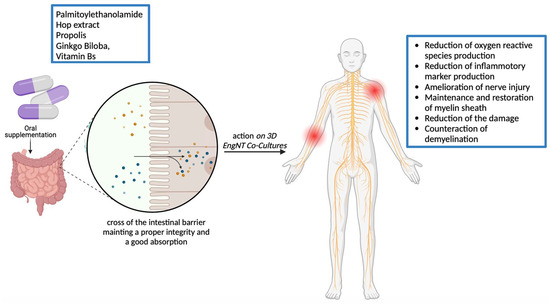
Graphical abstract
Open AccessArticle
Multi-System-Level Analysis with RNA-Seq on Pterygium Inflammation Discovers Association between Inflammatory Responses, Oxidative Stress, and Oxidative Phosphorylation
by
Ye-Ah Kim, Yueun Choi, Tae Gi Kim, Jisu Jeong, Sanghyeon Yu, Taeyoon Kim, Kisung Sheen, Yoonsung Lee, Taesoo Choi, Yong Hwan Park, Min Seok Kang and Man S. Kim
Int. J. Mol. Sci. 2024, 25(9), 4789; https://doi.org/10.3390/ijms25094789 (registering DOI) - 27 Apr 2024
Abstract
A pterygium is a common conjunctival degeneration and inflammatory condition. It grows onto the corneal surface or limbus, causing blurred vision and cosmetic issues. Ultraviolet is a well-known risk factor for the development of a pterygium, although its pathogenesis remains unclear, with only
[...] Read more.
A pterygium is a common conjunctival degeneration and inflammatory condition. It grows onto the corneal surface or limbus, causing blurred vision and cosmetic issues. Ultraviolet is a well-known risk factor for the development of a pterygium, although its pathogenesis remains unclear, with only limited understanding of its hereditary basis. In this study, we collected RNA-seq from both pterygial tissues and conjunctival tissues (as controls) from six patients (a total of twelve biological samples) and retrieved publicly available data, including eight pterygium samples and eight controls. We investigated the intrinsic gene regulatory mechanisms closely linked to the inflammatory reactions of pterygiums and compared Asian (Korea) and the European (Germany) pterygiums using multiple analysis approaches from different perspectives. The increased expression of antioxidant genes in response to oxidative stress and DNA damage implies an association between these factors and pterygium development. Also, our comparative analysis revealed both similarities and differences between Asian and European pterygiums. The decrease in gene expressions involved in the three primary inflammatory signaling pathways—JAK/STAT, MAPK, and NF-kappa B signaling—suggests a connection between pathway dysfunction and pterygium development. We also observed relatively higher activity of autophagy and antioxidants in the Asian group, while the European group exhibited more pronounced stress responses against oxidative stress. These differences could potentially be necessitated by energy-associated pathways, specifically oxidative phosphorylation.
Full article
(This article belongs to the Special Issue Application of High-Throughput Omics Sequencing in Personalized Medicine)
Open AccessArticle
A Structural In Silico Analysis of the Immunogenicity of L-Asparaginase from Penicillium cerradense
by
Kellen Cruvinel Rodrigues Andrade, Mauricio Homem-de-Mello, Julia Almeida Motta, Marina Guimarães Borges, Joel Antônio Cordeiro de Abreu, Paula Monteiro de Souza, Adalberto Pessoa, Georgios J. Pappas, Jr. and Pérola de Oliveira Magalhães
Int. J. Mol. Sci. 2024, 25(9), 4788; https://doi.org/10.3390/ijms25094788 (registering DOI) - 27 Apr 2024
Abstract
L-asparaginase is an essential drug used to treat acute lymphoid leukemia (ALL), a cancer of high prevalence in children. Several adverse reactions associated with L-asparaginase have been observed, mainly caused by immunogenicity and allergenicity. Some strategies have been adopted, such as searching for
[...] Read more.
L-asparaginase is an essential drug used to treat acute lymphoid leukemia (ALL), a cancer of high prevalence in children. Several adverse reactions associated with L-asparaginase have been observed, mainly caused by immunogenicity and allergenicity. Some strategies have been adopted, such as searching for new microorganisms that produce the enzyme and applying protein engineering. Therefore, this work aimed to elucidate the molecular structure and predict the immunogenic profile of L-asparaginase from Penicillium cerradense, recently revealed as a new fungus of the genus Penicillium and producer of the enzyme, as a motivation to search for alternatives to bacterial L-asparaginase. In the evolutionary relationship, L-asparaginase from P. cerradense closely matches Aspergillus species. Using in silico tools, we characterized the enzyme as a protein fragment of 378 amino acids (39 kDa), including a signal peptide containing 17 amino acids, and the isoelectric point at 5.13. The oligomeric state was predicted to be a homotetramer. Also, this L-asparaginase presented a similar immunogenicity response (T- and B-cell epitopes) compared to Escherichia coli and Dickeya chrysanthemi enzymes. These results suggest a potentially useful L-asparaginase, with insights that can drive strategies to improve enzyme production.
Full article
(This article belongs to the Section Molecular Immunology)
Open AccessArticle
The Rise in Tubular pH during Hypercalciuria Exacerbates Calcium Stone Formation
by
Farai C. Gombedza, Samuel Shin, Jaclyn Sadiua, George B. Stackhouse and Bidhan C. Bandyopadhyay
Int. J. Mol. Sci. 2024, 25(9), 4787; https://doi.org/10.3390/ijms25094787 (registering DOI) - 27 Apr 2024
Abstract
In calcium nephrolithiasis (CaNL), most calcium kidney stones are identified as calcium oxalate (CaOx) with variable amounts of calcium phosphate (CaP), where CaP is found as the core component. The nucleation of CaP could be the first step of CaP+CaOx (mixed) stone formation.
[...] Read more.
In calcium nephrolithiasis (CaNL), most calcium kidney stones are identified as calcium oxalate (CaOx) with variable amounts of calcium phosphate (CaP), where CaP is found as the core component. The nucleation of CaP could be the first step of CaP+CaOx (mixed) stone formation. High urinary supersaturation of CaP due to hypercalciuria and an elevated urine pH have been described as the two main factors in the nucleation of CaP crystals. Our previous in vivo findings (in mice) show that transient receptor potential canonical type 3 (TRPC3)-mediated Ca2+ entry triggers a transepithelial Ca2+ flux to regulate proximal tubular (PT) luminal [Ca2+], and TRPC3-knockout (KO; -/-) mice exhibited moderate hypercalciuria and microcrystal formation at the loop of Henle (LOH). Therefore, we utilized TRPC3 KO mice and exposed them to both hypercalciuric [2% calcium gluconate (CaG) treatment] and alkalineuric conditions [0.08% acetazolamide (ACZ) treatment] to generate a CaNL phenotype. Our results revealed a significant CaP and mixed crystal formation in those treated KO mice (KOT) compared to their WT counterparts (WTT). Importantly, prolonged exposure to CaG and ACZ resulted in a further increase in crystal size for both treated groups (WTT and KOT), but the KOT mice crystal sizes were markedly larger. Moreover, kidney tissue sections of the KOT mice displayed a greater CaP and mixed microcrystal formation than the kidney sections of the WTT group, specifically in the outer and inner medullary and calyceal region; thus, a higher degree of calcifications and mixed calcium lithiasis in the kidneys of the KOT group was displayed. In our effort to find the Ca2+ signaling pathophysiology of PT cells, we found that PT cells from both treated groups (WTT and KOT) elicited a larger Ca2+ entry compared to the WT counterparts because of significant inhibition by the store-operated Ca2+ entry (SOCE) inhibitor, Pyr6. In the presence of both SOCE (Pyr6) and ROCE (receptor-operated Ca2+ entry) inhibitors (Pyr10), Ca2+ entry by WTT cells was moderately inhibited, suggesting that the Ca2+ and pH levels exerted sensitivity changes in response to ROCE and SOCE. An assessment of the gene expression profiles in the PT cells of WTT and KOT mice revealed a safeguarding effect of TRPC3 against detrimental processes (calcification, fibrosis, inflammation, and apoptosis) in the presence of higher pH and hypercalciuric conditions in mice. Together, these findings show that compromise in both the ROCE and SOCE mechanisms in the absence of TRPC3 under hypercalciuric plus higher tubular pH conditions results in higher CaP and mixed crystal formation and that TRPC3 is protective against those adverse effects.
Full article
(This article belongs to the Special Issue Calcium Homeostasis of Cells in Health and Disease 2.0)
►▼
Show Figures
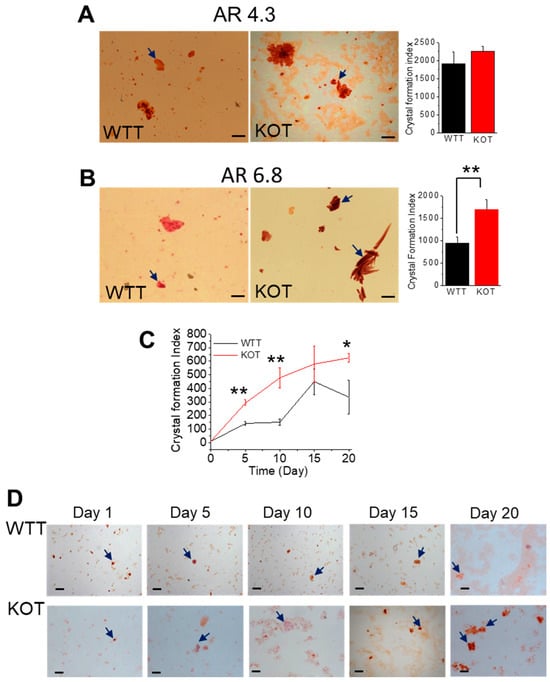
Figure 1
Open AccessArticle
Berberis vulgaris L. Root Extract as a Multi-Target Chemopreventive Agent against Colon Cancer Causing Apoptosis in Human Colon Adenocarcinoma Cell Lines
by
Anna Och, Marta Kinga Lemieszek, Marek Cieśla, Dariusz Jedrejek, Aleksandra Kozłowska, Sylwia Pawelec and Renata Nowak
Int. J. Mol. Sci. 2024, 25(9), 4786; https://doi.org/10.3390/ijms25094786 (registering DOI) - 27 Apr 2024
Abstract
Berberis vulgaris L. (Berberidaceae) is a shrub that has been widely used in European folk medicine as an anti-inflammatory and antimicrobial agent. The purpose of our study was to elucidate the mechanisms of the chemopreventive action of the plant’s methanolic root
[...] Read more.
Berberis vulgaris L. (Berberidaceae) is a shrub that has been widely used in European folk medicine as an anti-inflammatory and antimicrobial agent. The purpose of our study was to elucidate the mechanisms of the chemopreventive action of the plant’s methanolic root extract (BVR) against colon cancer cells. Studies were conducted in human colon adenocarcinoma cell lines (LS180 and HT-29) and control colon epithelial CCD841 CoN cells. According to the MTT assay, after 48 h of cell exposure, the IC50 values were as follows: 4.3, 46.1, and 50.2 µg/mL for the LS180, HT-29, and CCD841 CoN cells, respectively, showing the greater sensitivity of the cancer cells to BVR. The Cell Death Detection ELISAPLUS kit demonstrated that BVR induced programmed cell death only against HT-29 cells. Nuclear double staining revealed the great proapoptotic BVR properties in HT-29 cells and subtle effect in LS180 cells. RT-qPCR with the relative quantification method showed significant changes in the expression of genes related to apoptosis in both the LS180 and HT-29 cells. The genes BCL2L1 (126.86–421.43%), BCL2L2 (240–286.02%), CASP3 (177.19–247.83%), and CASP9 (157.99–243.75%) had a significantly elevated expression, while BCL2 (25–52.03%) had a reduced expression compared to the untreated control. Furthermore, in a panel of antioxidant tests, BVR showed positive effects (63.93 ± 0.01, 122.92 ± 0.01, and 220.29 ± 0.02 mg Trolox equivalents (TE)/g in the DPPH•, ABTS•+, and ORAC assays, respectively). In the lipoxygenase (LOX) inhibition test, BVR revealed 62.60 ± 0.87% of enzyme inhibition. The chemical composition of BVR was determined using a UHPLC-UV-CAD-MS/MS analysis and confirmed the presence of several known alkaloids, including berberine, as well as other alkaloids and two derivatives of hydroxycinnamic acid (ferulic and sinapic acid hexosides). The results are very promising and encourage the use of BVR as a comprehensive chemopreventive agent (anti-inflammatory, antioxidant, and pro-apoptotic) in colorectal cancer, and were widely discussed alongside data from the literature.
Full article
(This article belongs to the Special Issue Antioxidants and Anti-inflammatory, Antiproliferative Activities of Natural Products)
►▼
Show Figures

Figure 1
Open AccessBrief Report
SIRT1 Serum Concentrations in Lipodystrophic Syndromes
by
Luisa Salvatori, Silvia Magno, Giovanni Ceccarini, Rossella Tozzi, Savina Contini, Caterina Pelosini, Ferruccio Santini, Lucio Gnessi and Stefania Mariani
Int. J. Mol. Sci. 2024, 25(9), 4785; https://doi.org/10.3390/ijms25094785 (registering DOI) - 27 Apr 2024
Abstract
Lipodystrophies (LDs) are rare, complex disorders of the adipose tissue characterized by selective fat loss, altered adipokine profile and metabolic impairment. Sirtuins (SIRTs) are class III NAD+-dependent histone deacetylases linked to fat metabolism. SIRT1 plays a critical role in metabolic health
[...] Read more.
Lipodystrophies (LDs) are rare, complex disorders of the adipose tissue characterized by selective fat loss, altered adipokine profile and metabolic impairment. Sirtuins (SIRTs) are class III NAD+-dependent histone deacetylases linked to fat metabolism. SIRT1 plays a critical role in metabolic health by deacetylating target proteins in tissue types including liver, muscle, and adipose. Circulating SIRT1 levels have been found to be reduced in obesity and increased in anorexia nervosa and patients experiencing weight loss. We evaluated circulating SIRT1 levels in relation to fat levels in 32 lipodystrophic patients affected by congenital or acquired LDs compared to non-LD subjects (24 with anorexia nervosa, 22 normal weight, and 24 with obesity). SIRT1 serum levels were higher in LDs than normal weight subjects (mean ± SEM 4.18 ± 0.48 vs. 2.59 ± 0.20 ng/mL) and subjects with obesity (1.7 ± 0.39 ng/mL), whereas they were close to those measured in anorexia nervosa (3.44 ± 0.46 ng/mL). Our findings show that within the LD group, there was no relationship between SIRT1 levels and the amount of body fat. The mechanisms responsible for secretion and regulation of SIRT1 in LD deserve further investigation.
Full article
(This article belongs to the Special Issue Sirtuins as Players in Cell Metabolism and Functions)
►▼
Show Figures
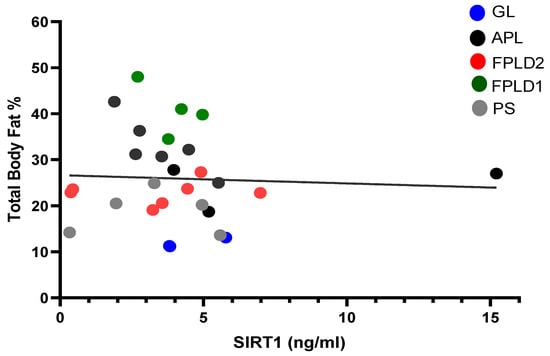
Figure 1
Open AccessReview
The Role of TRP Channels in Sepsis and Colitis
by
Kristina A. Dvornikova, Olga N. Platonova and Elena Y. Bystrova
Int. J. Mol. Sci. 2024, 25(9), 4784; https://doi.org/10.3390/ijms25094784 (registering DOI) - 27 Apr 2024
Abstract
To date, several members of the transient receptor potential (TRP) channels which provide a wide array of roles have been found in the gastrointestinal tract (GI). The goal of earlier research was to comprehend the intricate signaling cascades that contribute to TRP channel
[...] Read more.
To date, several members of the transient receptor potential (TRP) channels which provide a wide array of roles have been found in the gastrointestinal tract (GI). The goal of earlier research was to comprehend the intricate signaling cascades that contribute to TRP channel activation as well as how these receptors’ activity affects other systems. Moreover, there is a large volume of published studies describing the role of TRP channels in a number of pathological disorders, including inflammatory bowel disease (IBD) and sepsis. Nevertheless, the generalizability of these results is subject to certain limitations. For instance, the study of IBD relies on various animal models and experimental methods, which are unable to precisely imitate the multifactorial chronic disease. The diverse pathophysiological mechanisms and unique susceptibility of animals may account for the inconsistency of the experimental data collected. The main purpose of this study was to conduct a comprehensive review and analysis of existing studies on transient receptor potential (TRP) channels implicating specific models of colitis and sepsis, with particular emphasis on their involvement in pathological disorders such as IBD and sepsis. Furthermore, the text endeavors to evaluate the generalizability of experimental findings, taking into consideration the limitations posed by animal models and experimental methodologies. Finally, we also provide an updated schematic of the most important and possible molecular signaling pathways associated with TRP channels in IBD and sepsis.
Full article
(This article belongs to the Special Issue TRP Channels in Pain and Inflammation 2.0)
Open AccessReview
Mitochondria-Derived Vesicles, Sterile Inflammation, and Pyroptosis in Liver Cancer: Partners in Crime or Innocent Bystanders?
by
Flora Guerra, Francesca Romana Ponziani, Ferdinando Cardone, Cecilia Bucci, Emanuele Marzetti and Anna Picca
Int. J. Mol. Sci. 2024, 25(9), 4783; https://doi.org/10.3390/ijms25094783 (registering DOI) - 27 Apr 2024
Abstract
Alterations in cellular signaling, chronic inflammation, and tissue remodeling contribute to hepatocellular carcinoma (HCC) development. The release of damage-associated molecular patterns (DAMPs) upon tissue injury and the ensuing sterile inflammation have also been attributed a role in HCC pathogenesis. Cargoes of extracellular vesicles
[...] Read more.
Alterations in cellular signaling, chronic inflammation, and tissue remodeling contribute to hepatocellular carcinoma (HCC) development. The release of damage-associated molecular patterns (DAMPs) upon tissue injury and the ensuing sterile inflammation have also been attributed a role in HCC pathogenesis. Cargoes of extracellular vesicles (EVs) and/or EVs themselves have been listed among circulating DAMPs but only partially investigated in HCC. Mitochondria-derived vesicles (MDVs), a subpopulation of EVs, are another missing link in the comprehension of the molecular mechanisms underlying the onset and progression of HCC biology. EVs have been involved in HCC growth, dissemination, angiogenesis, and immunosurveillance escape. The contribution of MDVs to these processes is presently unclear. Pyroptosis triggers systemic inflammation through caspase-dependent apoptotic cell death and is implicated in tumor immunity. The analysis of this process, together with MDV characterization, may help capture the relationship among HCC development, mitochondrial quality control, and inflammation. The combination of immune checkpoint inhibitors (i.e., atezolizumab and bevacizumab) has been approved as a synergistic first-line systemic treatment for unresectable or advanced HCC. The lack of biomarkers that may allow prediction of treatment response and, therefore, patient selection, is a major unmet need. Herein, we overview the molecular mechanisms linking mitochondrial dysfunction, inflammation, and pyroptosis, and discuss how immunotherapy targets, at least partly, these routes.
Full article
(This article belongs to the Special Issue Emerging Role of Immunogenic Cell Death in Cancer Therapy)
Open AccessArticle
Meibum Lipidomic Analysis in Evaporative Dry Eye Subjects
by
Jacobo Garcia-Queiruga, Hugo Pena-Verdeal, Belen Sabucedo-Villamarin, Monica Paz-Tarrio, Esteban Guitian-Fernandez, Carlos Garcia-Resua, Eva Yebra-Pimentel and Maria J. Giraldez
Int. J. Mol. Sci. 2024, 25(9), 4782; https://doi.org/10.3390/ijms25094782 (registering DOI) - 27 Apr 2024
Abstract
Meibomian Glands (MG) are sebaceous glands responsible for the production of meibum, the main component of the Tear Film Lipid Layer (TFLL). The TFLL facilitates the spread of the tear film over the ocular surface, provides stability and reduces tear evaporation. Alterations in
[...] Read more.
Meibomian Glands (MG) are sebaceous glands responsible for the production of meibum, the main component of the Tear Film Lipid Layer (TFLL). The TFLL facilitates the spread of the tear film over the ocular surface, provides stability and reduces tear evaporation. Alterations in meibum composition lead to different ocular alterations like Meibomian Gland Dysfunction (MGD) and subsequent Evaporative Dry Eye (EDE). The aim of the present study was to investigate the composition and abundance of meibum lipids and their relationship with eyelid margin abnormalities, lipid layer patterns and MG status. The study utilizes a lipidomic approach to identify and quantify lipids in meibum samples using an Elute UHPLC system. This system considered all four dimensions (mass/charge, retention time, ion mobility and intensity) to provide the accurate identification of lipid species. Samples were categorized as healthy or low/no signs of alteration (group 1) or severe signs of alteration or EDE/MGD (group 2). The current investigation found differences in Variable Importance in Projection lipid abundance between both groups for the MGD signs studied. Changes in meibum composition occur and are related to higher scores in eyelid margin hyperaemia, eyelid margin irregularity, MG orifice plugging, MG loss and lipid layer pattern.
Full article
(This article belongs to the Special Issue Molecular Advances in Dry Eye Syndrome)
►▼
Show Figures
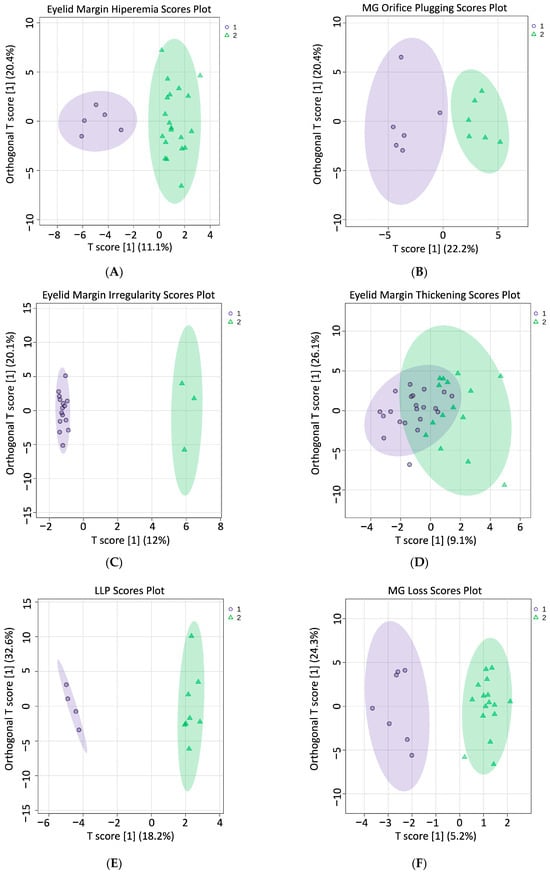
Figure 1
Open AccessArticle
Examination of the Complex Molecular Landscape in Obesity and Type 2 Diabetes
by
Uladzislau Vadadokhau, Imre Varga, Miklós Káplár, Miklós Emri and Éva Csősz
Int. J. Mol. Sci. 2024, 25(9), 4781; https://doi.org/10.3390/ijms25094781 (registering DOI) - 27 Apr 2024
Abstract
The escalating prevalence of metabolic disorders, notably type 2 diabetes (T2D) and obesity, presents a critical global health challenge, necessitating deeper insights into their molecular underpinnings. Our study integrates proteomics and metabolomics analyses to delineate the complex molecular landscapes associated with T2D and
[...] Read more.
The escalating prevalence of metabolic disorders, notably type 2 diabetes (T2D) and obesity, presents a critical global health challenge, necessitating deeper insights into their molecular underpinnings. Our study integrates proteomics and metabolomics analyses to delineate the complex molecular landscapes associated with T2D and obesity. Leveraging data from 130 subjects, including individuals with T2D and obesity as well as healthy controls, we elucidate distinct molecular signatures and identify novel biomarkers indicative of disease progression. Our comprehensive characterization of cardiometabolic proteins and serum metabolites unveils intricate networks of biomolecular interactions and highlights differential protein expression patterns between T2D and obesity cohorts. Pathway enrichment analyses reveal unique mechanisms underlying disease development and progression, while correlation analyses elucidate the interplay between proteomics, metabolomics, and clinical parameters. Furthermore, network analyses underscore the interconnectedness of cardiometabolic proteins and provide insights into their roles in disease pathogenesis. Our findings may help to refine diagnostic strategies and inform the development of personalized interventions, heralding a new era in precision medicine and healthcare innovation. Through the integration of multi-omics approaches and advanced analytics, our study offers a crucial framework for deciphering the intricate molecular underpinnings of metabolic disorders and paving the way for transformative therapeutic strategies.
Full article
(This article belongs to the Section Molecular Pathology, Diagnostics, and Therapeutics)
►▼
Show Figures

Figure 1
Open AccessArticle
Fetal Hypoglycemia Induced by Placental SLC2A3-RNA Interference Alters Fetal Pancreas Development and Transcriptome at Mid-Gestation
by
Victoria C. Kennedy, Cameron S. Lynch, Amelia R. Tanner, Quinton A. Winger, Ahmed Gad, Paul J. Rozance and Russell V. Anthony
Int. J. Mol. Sci. 2024, 25(9), 4780; https://doi.org/10.3390/ijms25094780 (registering DOI) - 27 Apr 2024
Abstract
Glucose, the primary energy substrate for fetal oxidative processes and growth, is transferred from maternal to fetal circulation down a concentration gradient by placental facilitative glucose transporters. In sheep, SLC2A1 and SLC2A3 are the primary transporters available in the placental epithelium, with SLC2A3
[...] Read more.
Glucose, the primary energy substrate for fetal oxidative processes and growth, is transferred from maternal to fetal circulation down a concentration gradient by placental facilitative glucose transporters. In sheep, SLC2A1 and SLC2A3 are the primary transporters available in the placental epithelium, with SLC2A3 located on the maternal-facing apical trophoblast membrane and SLC2A1 located on the fetal-facing basolateral trophoblast membrane. We have previously reported that impaired placental SLC2A3 glucose transport resulted in smaller, hypoglycemic fetuses with reduced umbilical artery insulin and glucagon concentrations, in addition to diminished pancreas weights. These findings led us to subject RNA derived from SLC2A3-RNAi (RNA interference) and NTS-RNAi (non-targeting sequence) fetal pancreases to qPCR followed by transcriptomic analysis. We identified a total of 771 differentially expressed genes (DEGs). Upregulated pathways were associated with fat digestion and absorption, particularly fatty acid transport, lipid metabolism, and cholesterol biosynthesis, suggesting a potential switch in energetic substrates due to hypoglycemia. Pathways related to molecular transport and cell signaling in addition to pathways influencing growth and metabolism of the developing pancreas were also impacted. A few genes directly related to gluconeogenesis were also differentially expressed. Our results suggest that fetal hypoglycemia during the first half of gestation impacts fetal pancreas development and function that is not limited to β cell activity.
Full article
(This article belongs to the Special Issue Molecular Pathogenesis and Treatment of Pregnancy Complications)
►▼
Show Figures
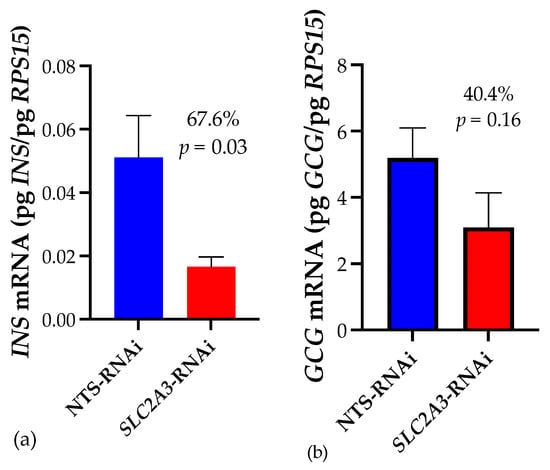
Figure 1
Open AccessArticle
Fructosyl Amino Oxidase as a Therapeutic Enzyme in Age-Related Macular Degeneration
by
Joris R. Delanghe, Jose Diana Di Mavungu, Koen Beerens, Jonas Himpe, Nezahat Bostan, Marijn M. Speeckaert, Henk Vrielinck, Anne Vral, Caroline Van Den Broeke, Manon Huizing and Elisabeth Van Aken
Int. J. Mol. Sci. 2024, 25(9), 4779; https://doi.org/10.3390/ijms25094779 (registering DOI) - 27 Apr 2024
Abstract
Age-related macular degeneration (AMD) is an age-related disorder that is a global public health problem. The non-enzymatic Maillard reaction results in the formation of advanced glycation end products (AGEs). Accumulation of AGEs in drusen plays a key role in AMD. AGE-reducing drugs may
[...] Read more.
Age-related macular degeneration (AMD) is an age-related disorder that is a global public health problem. The non-enzymatic Maillard reaction results in the formation of advanced glycation end products (AGEs). Accumulation of AGEs in drusen plays a key role in AMD. AGE-reducing drugs may contribute to the prevention and treatment of AGE-related disease. Fructosamine oxidase (FAOD) acts on fructosyl lysine and fructosyl valine. Based upon the published results of fructosamine 3-kinase (FN3K) and FAOD obtained in cataract and presbyopia, we studied ex vivo FAOD treatment as a non-invasive AMD therapy. On glycolaldehyde-treated porcine retinas, FAOD significantly reduced AGE autofluorescence (p = 0.001). FAOD treatment results in a breakdown of AGEs, as evidenced using UV fluorescence, near-infrared microspectroscopy on stained tissue sections of human retina, and gel permeation chromatography. Drusen are accumulations of AGEs that build up between Bruch’s membrane and the retinal pigment epithelium. On microscopy slides of human retina affected by AMD, a significant reduction in drusen surface to 45 ± 21% was observed following FAOD treatment. Enzymatic digestion followed by mass spectrometry of fructose- and glucose-based AGEs (produced in vitro) revealed a broader spectrum of substrates for FAOD, as compared to FN3K, including the following: fructosyllysine, carboxymethyllysine, carboxyethyllysine, and imidazolone. In contrast to FN3K digestion, agmatine (4-aminobutyl-guanidine) was formed following FAOD treatment in vitro. The present study highlights the therapeutic potential of FAOD in AMD by repairing glycation-induced damage.
Full article
(This article belongs to the Special Issue Molecular Mechanisms of Retina Degeneration)
►▼
Show Figures
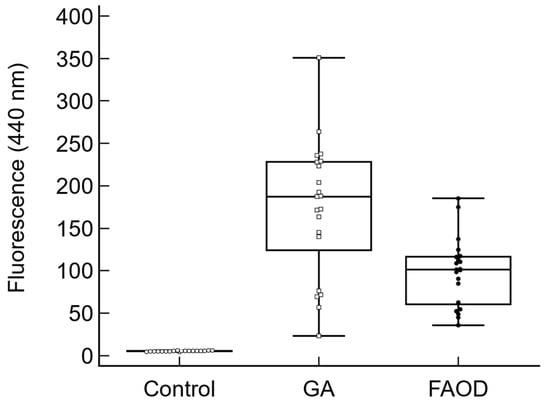
Figure 1
Open AccessReview
Paediatric Atopic Dermatitis: The Unexpected Impact on Life with a Specific Look at the Molecular Level
by
Silvia Artusa, Giorgia Mazzuca, Giorgio Piacentini, Riccardo Castagnoli, Gian Luigi Marseglia, Angelo Pietrobelli and Luca Pecoraro
Int. J. Mol. Sci. 2024, 25(9), 4778; https://doi.org/10.3390/ijms25094778 (registering DOI) - 27 Apr 2024
Abstract
Atopic dermatitis (AD) is a condition with a multifactorial aetiology that affects the skin. It most often begins at preschool age and involves the skin. The disease’s main symptom is intense itching, which occurs especially at night and affects the child’s sleep, negatively
[...] Read more.
Atopic dermatitis (AD) is a condition with a multifactorial aetiology that affects the skin. It most often begins at preschool age and involves the skin. The disease’s main symptom is intense itching, which occurs especially at night and affects the child’s sleep, negatively impacting the quality of life of affected children and, consequently, their families. The difficulty in resting during the night leads to many problems during the day, particularly behavioural disorders and difficulties in paying attention at school, which results in learning impairment. The unexpected symptoms of AD are caused by pathophysiological processes that include many molecular pathways and inflammatory cytokines such as IL-31, IL-1, IL-2, TNF-a, and IL-6. Drawing on a comprehensive review of the literature in PubMed/MedLine, our review offers an in-depth exploration of both the psychosocial impacts of AD and the molecular processes that contribute to this disorder.
Full article
(This article belongs to the Special Issue Molecular Basis and Treatment of Skin Diseases and Their Associated Complications)
►▼
Show Figures
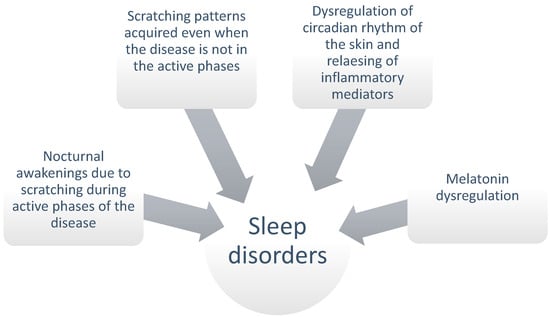
Figure 1
Open AccessArticle
How the Ethylene Biosynthesis Pathway of Semi-Halophytes Is Modified with Prolonged Salinity Stress Occurrence?
by
Miron Gieniec, Zbigniew Miszalski, Piotr Rozpądek, Roman J. Jędrzejczyk, Małgorzata Czernicka and Michał Nosek
Int. J. Mol. Sci. 2024, 25(9), 4777; https://doi.org/10.3390/ijms25094777 (registering DOI) - 27 Apr 2024
Abstract
The mechanism of ethylene (ET)–regulated salinity stress response remains largely unexplained, especially for semi-halophytes and halophytes. Here, we present the results of the multifaceted analysis of the model semi-halophyte Mesembryanthemum crystallinum L. (common ice plant) ET biosynthesis pathway key components’ response to prolonged
[...] Read more.
The mechanism of ethylene (ET)–regulated salinity stress response remains largely unexplained, especially for semi-halophytes and halophytes. Here, we present the results of the multifaceted analysis of the model semi-halophyte Mesembryanthemum crystallinum L. (common ice plant) ET biosynthesis pathway key components’ response to prolonged (14 days) salinity stress. Transcriptomic analysis revealed that the expression of 3280 ice plant genes was altered during 14-day long salinity (0.4 M NaCl) stress. A thorough analysis of differentially expressed genes (DEGs) showed that the expression of genes involved in ET biosynthesis and perception (ET receptors), the abscisic acid (ABA) catabolic process, and photosynthetic apparatus was significantly modified with prolonged stressor presence. To some point this result was supported with the expression analysis of the transcript amount (qPCR) of key ET biosynthesis pathway genes, namely ACS6 (1-aminocyclopropane-1-carboxylate synthase) and ACO1 (1-aminocyclopropane-1-carboxylate oxidase) orthologs. However, the pronounced circadian rhythm observed in the expression of both genes in unaffected (control) plants was distorted and an evident downregulation of both orthologs’ was induced with prolonged salinity stress. The UPLC-MS analysis of the ET biosynthesis pathway rate-limiting semi-product, namely of 1-aminocyclopropane-1-carboxylic acid (ACC) content, confirmed the results assessed with molecular tools. The circadian rhythm of the ACC production of NaCl-treated semi-halophytes remained largely unaffected by the prolonged salinity stress episode. We speculate that the obtained results represent an image of the steady state established over the past 14 days, while during the first hours of the salinity stress response, the view could be completely different.
Full article
(This article belongs to the Special Issue Molecular Regulatory Mechanisms of Salinity Tolerance in Plants 2.0)
Open AccessArticle
Spatial Distribution of Macrophage and Lymphocyte Subtypes within Tumor Microenvironment to Predict Recurrence of Non-Muscle-Invasive Papillary Urothelial Carcinoma after BCG Immunotherapy
by
Julius Drachneris, Mindaugas Morkunas, Mantas Fabijonavicius, Albertas Cekauskas, Feliksas Jankevicius and Arvydas Laurinavicius
Int. J. Mol. Sci. 2024, 25(9), 4776; https://doi.org/10.3390/ijms25094776 (registering DOI) - 27 Apr 2024
Abstract
Non-muscle-invasive papillary urothelial carcinoma (NMIPUC) of the urinary bladder is the most common type of bladder cancer. Intravesical Bacille Calmette–Guerin (BCG) immunotherapy is applied in patients with a high risk of recurrence and progression of NMIPUC to muscle-invasive disease. However, the tumor relapses
[...] Read more.
Non-muscle-invasive papillary urothelial carcinoma (NMIPUC) of the urinary bladder is the most common type of bladder cancer. Intravesical Bacille Calmette–Guerin (BCG) immunotherapy is applied in patients with a high risk of recurrence and progression of NMIPUC to muscle-invasive disease. However, the tumor relapses in about 30% of patients despite the treatment, raising the need for better risk stratification. We explored the potential of spatial distributions of immune cell subtypes (CD20, CD11c, CD163, ICOS, and CD8) within the tumor microenvironment to predict NMIPUC recurrence following BCG immunotherapy. Based on analyses of digital whole-slide images, we assessed the densities of the immune cells in the epithelial–stromal interface zone compartments and their distribution, represented by an epithelial–stromal interface density ratio (IDR). While the densities of any cell type did not predict recurrence, a higher IDR of CD11c (HR: 0.0012, p-value = 0.0002), CD8 (HR: 0.0379, p-value = 0.005), and ICOS (HR: 0.0768, p-value = 0.0388) was associated with longer recurrence-free survival (RFS) based on the univariate Cox regression. The history of positive repeated TUR (re-TUR) (HR: 4.93, p-value = 0.0001) and T1 tumor stage (HR: 2.04, p-value = 0.0159) were associated with shorter RFS, while G3 tumor grade according to the 1973 WHO classification showed borderline significance (HR: 1.83, p-value = 0.0522). In a multivariate analysis, the two models with a concordance index exceeding 0.7 included the CD11c IDR in combination with either a history of positive re-TUR or tumor stage. We conclude that the CD11c IDR is the most informative predictor of NMIPUC recurrence after BCG immunotherapy. Our findings highlight the importance of assessment of the spatial distribution of immune cells in the tumor microenvironment.
Full article
(This article belongs to the Special Issue Molecular and Cellular Advances in the Tumor Microenvironment and Cancer Immunotherapy)
►▼
Show Figures
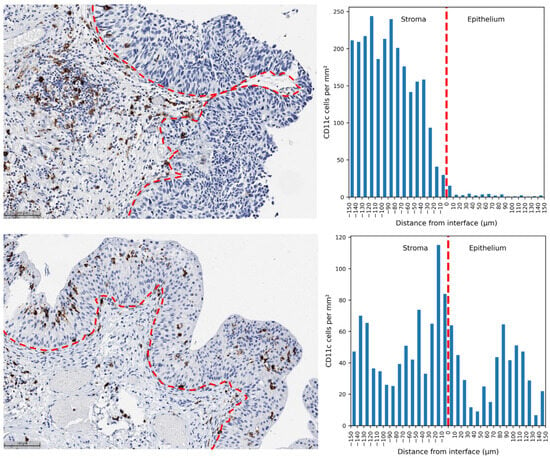
Figure 1

Journal Menu
► ▼ Journal Menu-
- IJMS Home
- Aims & Scope
- Editorial Board
- Reviewer Board
- Topical Advisory Panel
- Instructions for Authors
- Special Issues
- Topics
- Sections & Collections
- Article Processing Charge
- Indexing & Archiving
- Most Cited & Viewed
- Journal Statistics
- Journal History
- Journal Awards
- Society Collaborations
- Conferences
- Editorial Office
Journal Browser
► ▼ Journal Browser-
arrow_forward_ios
Forthcoming issue
arrow_forward_ios Current issue - Vol. 25 (2024)
- Vol. 24 (2023)
- Vol. 23 (2022)
- Vol. 22 (2021)
- Vol. 21 (2020)
- Vol. 20 (2019)
- Vol. 19 (2018)
- Vol. 18 (2017)
- Vol. 17 (2016)
- Vol. 16 (2015)
- Vol. 15 (2014)
- Vol. 14 (2013)
- Vol. 13 (2012)
- Vol. 12 (2011)
- Vol. 11 (2010)
- Vol. 10 (2009)
- Vol. 9 (2008)
- Vol. 8 (2007)
- Vol. 7 (2006)
- Vol. 6 (2005)
- Vol. 5 (2004)
- Vol. 4 (2003)
- Vol. 3 (2002)
- Vol. 2 (2001)
- Vol. 1 (2000)
Highly Accessed Articles
Latest Books
E-Mail Alert
News
Topics
Topic in
Biomedicines, Cells, IJMS, Life, Oxygen
Oxidative Stress and Inflammation, 2nd Volume
Topic Editors: Mohamad Allaw, Ines Castangia, Maria Letizia Manca, Matteo Perra, Amparo NacherDeadline: 31 May 2024
Topic in
BioChem, Biomedicines, Biomolecules, IJMS, Metabolites, Molecules
Natural Products in Prevention and Therapy of Metabolic Syndrome
Topic Editors: Jianbo Wan, Ligen LinDeadline: 30 June 2024
Topic in
Cells, Diseases, Healthcare, IJMS, Vaccines
Inflammation: The Cause of all Diseases 2.0
Topic Editors: Vasso Apostolopoulos, Jack Feehan, Vivek P. ChavdaDeadline: 31 July 2024
Topic in
Biomedicines, CIMB, Endocrines, IJMS, JMP, Life, Reprod. Med.
Pathogenesis of Pregnancy-Related Complications 2.0
Topic Editors: Ilona Hromadnikova, Katerina KotlabovaDeadline: 31 August 2024

Conferences
Special Issues
Special Issue in
IJMS
Monoclonal Antibodies and Their Functional Fragments in Research, Diagnosis and Therapy 3.0
Guest Editors: Menotti Ruvo, Annamaria SandomenicoDeadline: 30 April 2024
Special Issue in
IJMS
Pharmacogenetics and Personalized Medicine 3.0
Guest Editors: José A. Riancho, Gloria RavegniniDeadline: 20 May 2024
Special Issue in
IJMS
Molecular Mechanisms of Angiogenesis and Cancer
Guest Editor: Vijay AvinDeadline: 30 May 2024
Topical Collections
Topical Collection in
IJMS
Feature Papers in Bioactives and Nutraceuticals
Collection Editor: Maurizio Battino
Topical Collection in
IJMS
State-of-the-Art Molecular Microbiology in Poland
Collection Editors: Alicja Wegrzyn, Satish Raina
Topical Collection in
IJMS
Computational, Structural and Spectroscopic Studies of Enzyme Mechanisms, Inhibition and Dynamics
Collection Editor: Christo Christov








